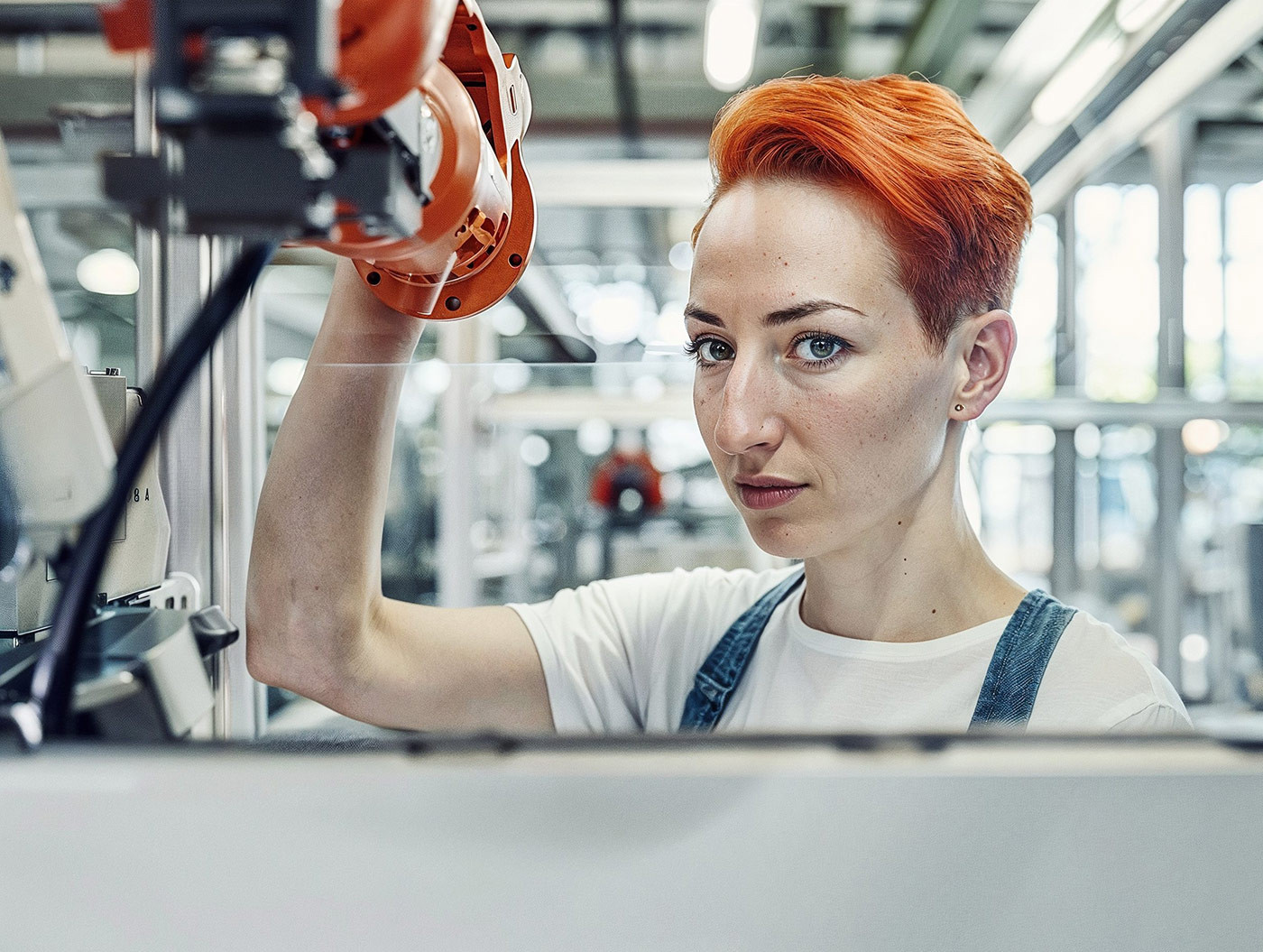What can and cannot be realized with AI?
Due to the variety of available algorithms, reference material and models, artificially generated images can easily create different visual styles and scenarios to convey certain emotions or concepts. This makes it possible to quickly create visual content that conveys a desired mood - for example, for mood boards that simulate a future shoot. I already actively use this option for my corporate and industry clients.
However, the implementation of a detailed briefing with specific components in the image proves to be almost impossible, as this would require the use of a variety of additional tools and the associated effort would significantly exceed that of an actual real image production process.
Generally speaking, real products, machines, rooms and real company employees are very difficult to integrate into the image.

Integration of people via the character reference feature in a predefined setting. Various source images are overlaid here. Theoretically, photography of employees can also be used, but this does not work in every case. As soon as glasses, caps or hats are involved, it becomes difficult. The proportions of the body change. But here too, this technique is an ingenious tool for simulating lighting situations, for example.

What is the AI/KI workflow in image production like?
After the conception of the image, the actual image development/prompting takes place via midjourney or stable diffusion. As a rule, existing image material is referenced as a source for the style and structure of the image. Elements in the image can be added or removed via the prompt. The quality of the input here describes the output to be seen.
Prompting has a lot to do with trial and error; you often have the same input generated again and again, as the output is different each time until you get a result you want to work with. This process takes time.
Since the outputs of the image generators look very clinical or are too smooth, you use additional software to bring life back into the image. I used Magnific AI for this, a paid tool. Magnific is also an upscaler that increases the resolution.
As in classic image production, the next step is Photoshop, where errors are removed and the image is edited further. Midjourning/Stable hardly ever outputs an image that does not need to be corrected. Eyes, hands, arms or inconsistencies in the background.







Questions about AI/KI topics? Then let's have a chat about it.